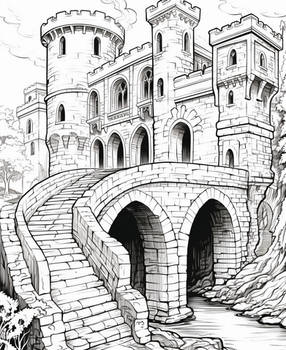ShopDreamUp AI ArtDreamUp
Deviation Actions

Full Access to All
Great way to support me! Full access to all previous and future exclusive content. All my galleries will add new images periodically, don't miss it!
$25/month
Suggested Deviants
Suggested Collections
You Might Like…
Description
Diatryma, aka Gastornis.
Diatryma, usually considered in conjunction with the European Gastornis, lived in the Paleocene and early to middle Eocene and reached a height of six feet and had a large, deep beak.
Although generally considered an arch-predator of Paleocene-Eocene periods, some, most notably Gregory Paul, have contended that Diatryma was instead a wading crustacean forager similar in mode to the modern Shoebill.
This, however, runs against both, the stark differentiations between the tibia (shin-bones), metatarsals (ankle-bones), and phalanges (toe-bones) of the diatryma and the shoebill, visa vi the formers heavily robust shin, ankle, and toe bones- more robust even than those of the three large extant ratites, and the latter’s lightly-structured limbs respectively, and the stark diversions between the two animals cervical vertebra (neck-bones), again with the formers being exceptionally robust in comparison with the lightly-structured vertebra of the shoebill.
In fact the diatrymids cervical-vertebra are more robust even than those of the phorusrhacoids or “terror-birds” of the Miocene-Pliocene periods; so robust they resemble less those of birds extinct or extant than those of the non-avian dinosaur theropods of the carnosaur and tyrannosaur types who used their robust necks and skulls to attack equally robust prey; a far cry from wading birds who use their relatively low heads and slender necks to quickly plunge into water to snap up unsuspecting prey.
Altogether the features of the diatrymids would have been ill-equipped for wading and over-equipped for the consumption of crustaceans!
With these facts in mind it is little doubt that the diatrymids were predators, and widely expansive predators at that, being some of the very first truly large predators of the post-Mesozoic period as well as their straddling both Eurasia and North America for some fifteen million years.
As predators as large as they were they would have easily preyed first, upon the early mammal herbivores of the condylarth families that emerged in the primordial forests of the Paleozoic, and second the earliest horses of the early-middle Eocene, while at the same time the Diatrymids would have competed for prey with the specialized predatory condylarthid arctocyonids as well as the first creodontid predators and most notably the other non-mammalian land carnivores; the eosuchian crocodiles.
The reason for its extinction is little understood but may well have to do with both the dramatic climate changes that occurred during the middle to late Eocene and the advance of large and more numerous mammal predators upon the Eurasian-North American continents during the same periods.
Artist's note: I worked on this piece on my lunch break at work with inks. Hope to do more Paleocene-Eocene animal renderings in the future.
Diatryma, usually considered in conjunction with the European Gastornis, lived in the Paleocene and early to middle Eocene and reached a height of six feet and had a large, deep beak.
Although generally considered an arch-predator of Paleocene-Eocene periods, some, most notably Gregory Paul, have contended that Diatryma was instead a wading crustacean forager similar in mode to the modern Shoebill.
This, however, runs against both, the stark differentiations between the tibia (shin-bones), metatarsals (ankle-bones), and phalanges (toe-bones) of the diatryma and the shoebill, visa vi the formers heavily robust shin, ankle, and toe bones- more robust even than those of the three large extant ratites, and the latter’s lightly-structured limbs respectively, and the stark diversions between the two animals cervical vertebra (neck-bones), again with the formers being exceptionally robust in comparison with the lightly-structured vertebra of the shoebill.
In fact the diatrymids cervical-vertebra are more robust even than those of the phorusrhacoids or “terror-birds” of the Miocene-Pliocene periods; so robust they resemble less those of birds extinct or extant than those of the non-avian dinosaur theropods of the carnosaur and tyrannosaur types who used their robust necks and skulls to attack equally robust prey; a far cry from wading birds who use their relatively low heads and slender necks to quickly plunge into water to snap up unsuspecting prey.
Altogether the features of the diatrymids would have been ill-equipped for wading and over-equipped for the consumption of crustaceans!
With these facts in mind it is little doubt that the diatrymids were predators, and widely expansive predators at that, being some of the very first truly large predators of the post-Mesozoic period as well as their straddling both Eurasia and North America for some fifteen million years.
As predators as large as they were they would have easily preyed first, upon the early mammal herbivores of the condylarth families that emerged in the primordial forests of the Paleozoic, and second the earliest horses of the early-middle Eocene, while at the same time the Diatrymids would have competed for prey with the specialized predatory condylarthid arctocyonids as well as the first creodontid predators and most notably the other non-mammalian land carnivores; the eosuchian crocodiles.
The reason for its extinction is little understood but may well have to do with both the dramatic climate changes that occurred during the middle to late Eocene and the advance of large and more numerous mammal predators upon the Eurasian-North American continents during the same periods.
Artist's note: I worked on this piece on my lunch break at work with inks. Hope to do more Paleocene-Eocene animal renderings in the future.
Image size
4724x4274px 6.19 MB
© 2009 - 2024 Iphicrates
Comments2
Join the community to add your comment. Already a deviant? Log In


































